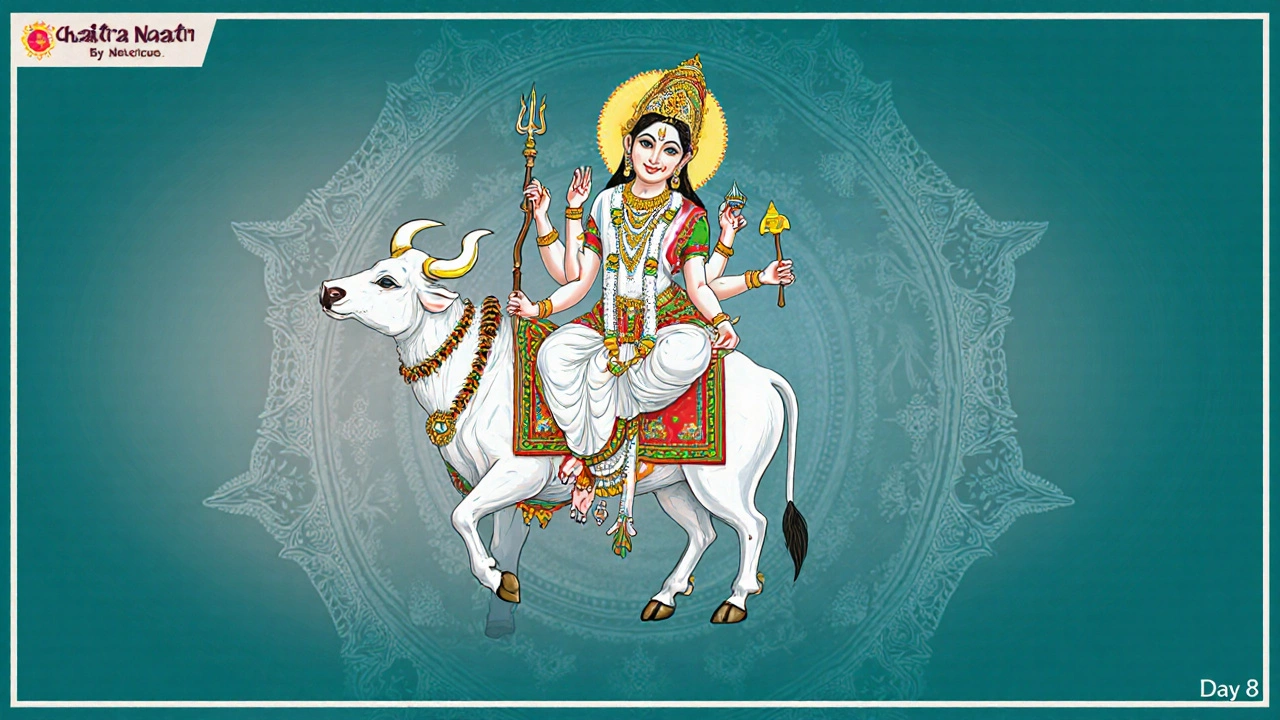Mark your calendars – Navratri 2025 kicks off on September 22 and runs through October 1, ending with the fireworks of Dussehra on October 2. While the dates are set, the real magic lies in the daily rituals, the specific colors devotees wear, and the unique aspects of each goddess. Below is a detailed walk‑through for anyone who wants to celebrate the festival with authenticity and style.
Day‑by‑Day Color & Goddess Schedule
- Day 1 – September 22 (Monday): White – Maa Shailputri
White stands for purity and new beginnings. Worshippers seek inner peace and protection as they start the nine‑day journey. - Day 2 – September 23 (Tuesday): Red – Maa Brahmacharini
Red ignites passion, courage and spiritual vigor. It’s the favorite shade for the chunri offered at the altar. - Day 3 – September 24 (Wednesday): Royal Blue – Maa Chandraghanta
Royal blue promotes tranquility, trust and prosperity, echoing the goddess’s calm bravery. - Day 4 – September 25 (Thursday): Yellow – Maa Kushmanda
Yellow radiates optimism and health, reflecting the goddess who is believed to have created the universe. - Day 5 – September 26 (Friday): Green – Maa Skandamata
Green symbolizes growth and nurturing, perfect for invoking blessings for children and family welfare. - Day 6 – September 27 (Saturday): Grey – Maa Katyayani
Grey offers balance and strength, helping devotees ask for assistance in marriage and removal of obstacles. - Day 7 – September 28 (Sunday): Orange – Maa Kaalratri
Orange fuels courage and energy, empowering worshippers to confront fear and darkness. - Day 8 – September 29 (Monday): Peacock Green – Maa Mahagauri
This vivid shade blends freshness with mysticism, inviting peace, prosperity and spiritual growth. - Day 9 – September 30 (Tuesday): Pink – Maa Siddhidatri
Pink reflects compassion and harmony, signaling the final push toward spiritual fulfillment and the granting of wishes.
The Power of Color in Worship
Color isn’t just a fashion statement during Navratri; it’s a conduit for divine energy. By aligning clothing, accessories, or even home décor with the day’s hue, devotees amplify the specific blessings associated with each goddess. For example, wearing yellow on Day 4 is thought to attract optimism and good health, while orange on Day 7 fuels the resolve needed to overcome negativity.
Modern practitioners can blend tradition with convenience. A simple scarf, a pair of earrings, or a wall hanging in the prescribed color can be just as effective as a full outfit. Many families also paint a corner of the prayer space in the day’s shade, creating a visual focal point that reinforces the spiritual intent.
Regional variations add flavor to the celebration. In Gujarat, the “Garba” dance circles often mirror the daily colors, while in West Bengal, elaborate “Durga Puja” pandals may incorporate the hues into their intricate décor. Regardless of location, the underlying principle remains: color acts as a bridge between the mortal and the divine.
Tips for those new to the practice:
- Plan your wardrobe ahead of time – a versatile white kurta can be accessorized with red dupatta for Day 2, saving last‑minute hassle.
- Incorporate the color in food presentation – a bowl of saffron‑tinted sweets on Day 2, for instance, adds an extra layer of devotion.
- Use natural dyes where possible – turmeric for yellow, beetroot for red – to keep the celebration eco‑friendly.
- Invite family members to join the color theme, turning the festival into a shared, harmonious experience.
As the ninth day winds down, the atmosphere shifts from the gentle pink of compassion to the triumphant roar of Dussehra on October 2. The transition marks the victory of good over evil, a universal message that resonates far beyond the nine‑day ritual.

